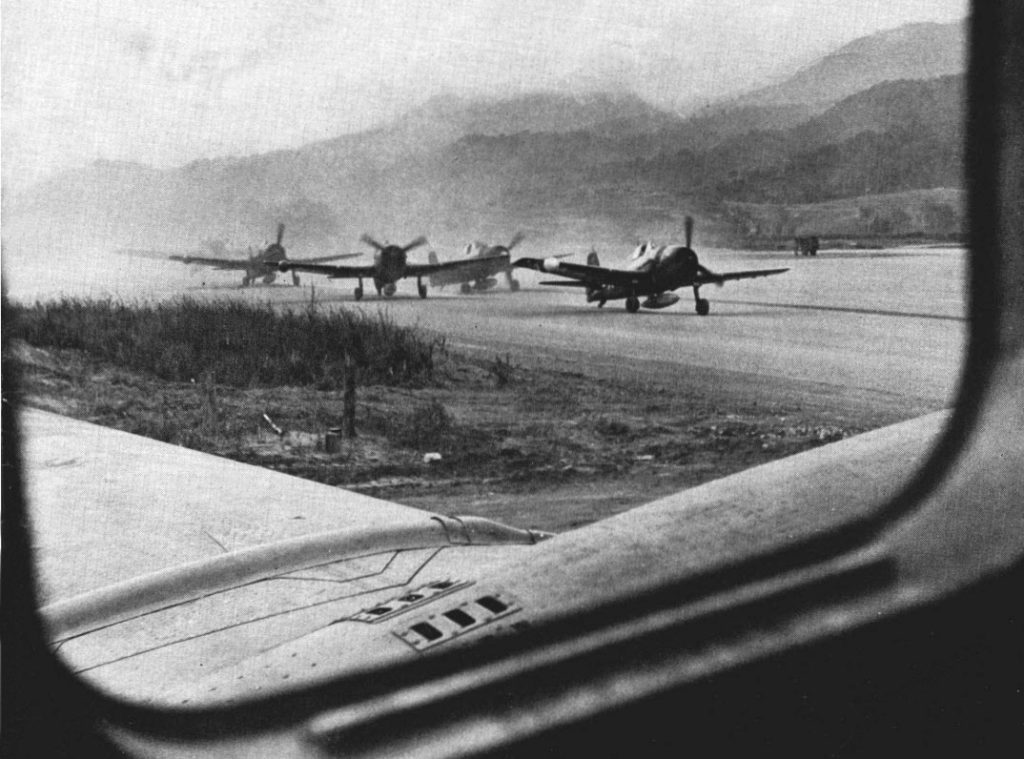Michael E. Haskew
VMF N-541 Night Fighter Squadron
During the spring and summer of 1944, the buildup for the long-awaited return of General Douglas MacArthur and the U.S. Army to the Philippines was proceeding at a rapid pace. Amid the preparations, Major General Ralph J. Mitchell, commander of the 1st Marine Aircraft Wing, flew to Australia twice. Offering the services of his battle-hardened pilots to MacArthur.
Each time, Mitchell received the administrative stiff-arm. The Army’s senior commanders wanted the liberation of the Philippines to be an exclusive undertaking. Mitchell, however, reasoned that Japanese air assets had effectively been swept from the skies of the northern Solomons and that nearly two years of continuing air operations made his pilots veterans with invaluable combat experience.
General MacArthur waded ashore on the Philippine island of Leyte on October 20, 1944, and rather than Marine aircraft it was the artillery of the V Amphibious Corps that arrived to provide initial support to the Army offensive. The Marines’ big guns were on loan to the Army since its own XXIV Corps artillery had been sent to aid the Marines then fighting in the Marianas. The first Marine fighter aircraft arrived in the Philippines from Peleliu at MacArthur’s request.
VMF N-541, Night Fighter Squadron
The mission of VMF N-541, a night fighter squadron equipped with specialized Grumman F6F Hellcats, was to neutralize the threat of Japanese Nakajima Ki-43 Oscar night fighters. MacArthur traded an Army night fighter squadron whose Northrop P-61 Black Widow fighters were too slow to catch the Oscars. At the same time, growing concern over Japanese kamikaze suicide attacks against U.S. Navy ships off the Philippine coast prompted Third Fleet commander Admiral William F. Halsey to suggest that land-based Marine aircraft were well suited to provide air support for the Army troops ashore.
Thus, the night-fighting Hellcats of VMF N-541 arrived on December 3, 1944. Hours ahead of 66 Marine Vought F4U Corsair fighters that completed an arduous 1957 mile (3149km) flight to the Philippine airstrip at Tacloban from Emirau in the Bismarck Islands. Soon, Marine fighter strength grew to 85 Corsairs as planes of VMF-115, VMF-211, VMF-218, and VMF-313. Marine Air Group 12 (MAG 12), roared in to land on the muddy strip.

Serving under the command of the 308th Bombardment Wing, Fifth Army Air Force, the Marine pilots coordinated operations with the Lockheed P-38 Lightning and Curtiss P-40 Tomahawk squadrons of the Army Air Forces. Both the Hellcats and Corsairs proved more than a dogfighting match for the Japanese Mitsubishi A6M Zero fighters in the Philippines. The Marine pilots also interdicted enemy resupply and reinforcement efforts at sea, devastating Japanese vessels with .50-caliber machine-gun fire.
The Marines Fly 264 Missions in Leyte
During the Leyte operations, MAG 12 pilots were credited with destroying 40 Japanese aircraft. Also sinking seven destroyers, nine freighters, and three troop transports, and damaging 11 more ships. In less than a month, the Marines had flown 264 missions. The Japanese ruefully nicknamed the Corsair the “Whistling Death”. By September 1944, Marine Corps’ air strength reached its peak, with 145 squadrons, and in the coming months the commitment of Marine air power to the Philippines Campaign steadily grew. The dive-bombers of MAG 24 and MAG 32 supported Army ground troops during the fighting on the island of Luzon, completing 8842 missions and dropping 19,167 bombs.
Michael E. Haskew is the editor of WWII History Magazine and the former editor of World War II Magazine . He is the author of a number of books, including THE MARINES IN WORLD WAR II. The Sniper at War and Order of Battle. Haskew is also the editor of The World War II Desk Reference with the Eisenhower Center for American Studies. He lives in Hixson, Tennessee.
